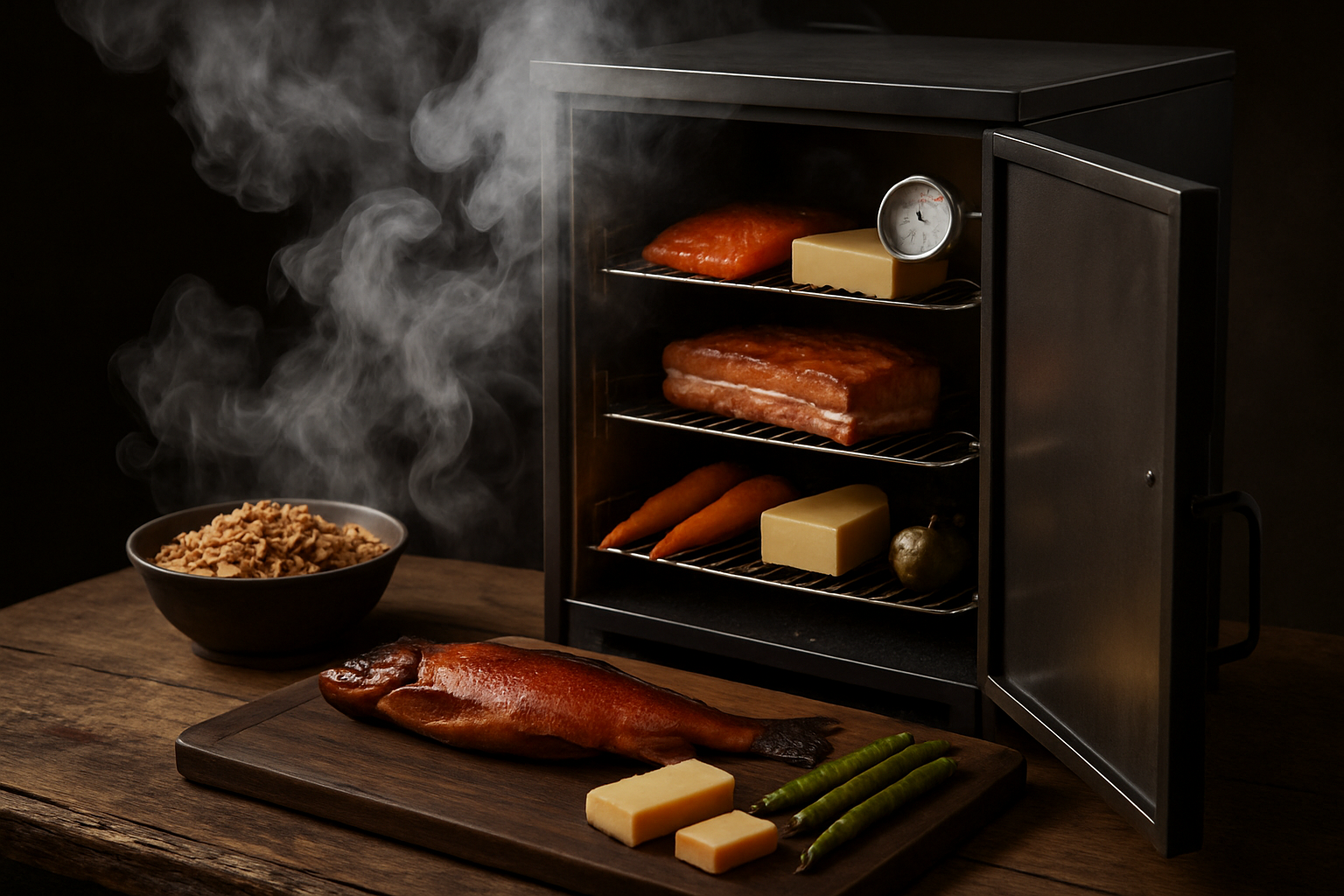Savoring the Smoke: Mastering the Art of Cold Smoking
Immerse yourself in the world of cold smoking, a culinary technique that infuses foods with rich, smoky flavors without cooking them. This ancient preservation method has evolved into a gourmet craft, offering endless possibilities for enhancing everything from cheese to cocktails. Join us as we explore the science, art, and flavor-packed potential of cold smoking at home.

The key to successful cold smoking lies in maintaining low temperatures while generating flavorful smoke. This is typically achieved using a separate firebox connected to a smoking chamber by a long pipe or tunnel. The distance allows the smoke to cool before reaching the food, ensuring that the smoking process doesn’t cook the items. Cold smoking can take anywhere from a few hours to several days, depending on the desired intensity of flavor and the type of food being smoked.
Choosing Your Cold Smoking Arsenal
To embark on your cold smoking journey, you’ll need to assemble the right tools. While professional cold smokers are available, many enthusiasts create DIY setups using existing grills or smokers. The essential components include a smoke generator, a smoking chamber, and a thermometer to monitor temperatures.
For smoke generation, consider options like the A-MAZE-N pellet smoker, which burns wood pellets slowly and consistently. Alternatively, you can use a soldering iron inserted into a tin can filled with wood chips for a budget-friendly approach. The smoking chamber can be as simple as a large cardboard box or as elaborate as a dedicated smoke cabinet. Whatever your setup, ensure proper ventilation to maintain airflow and prevent stagnant smoke.
Selecting the Perfect Smoke Medium
The choice of wood for cold smoking significantly influences the final flavor profile of your food. Different woods impart distinct tastes, ranging from mild and sweet to bold and intense. Popular options include:
-
Applewood: Mild and slightly sweet, ideal for cheese and poultry.
-
Hickory: Strong and bacon-like, perfect for red meats and nuts.
-
Maple: Subtle and sweet, great for vegetables and fruits.
-
Oak: Robust and versatile, suitable for most foods.
-
Cherry: Mild and fruity, excellent for cheeses and fish.
Experiment with various wood types and blends to discover your preferred flavor combinations. Remember that stronger woods like mesquite should be used sparingly to avoid overpowering the food’s natural taste.
Perfecting Your Cold Smoking Technique
Mastering cold smoking requires patience, practice, and attention to detail. Begin with foods that are forgiving and quick to smoke, such as cheese or nuts, before progressing to more challenging items like fish or meat. Here are some key tips to ensure success:
-
Maintain consistent temperatures between 68°F and 86°F (20°C to 30°C) throughout the smoking process.
-
Use a fan or natural airflow to keep smoke moving and prevent bitter flavors from developing.
-
Start with shorter smoking times and gradually increase duration to achieve desired flavor intensity.
-
Allow smoked foods to rest for 24-48 hours before consuming to allow flavors to mellow and distribute evenly.
-
Always follow food safety guidelines, especially when cold smoking meats or fish.
Beyond the Basics: Creative Cold Smoking Applications
Once you’ve mastered the fundamentals, explore the vast potential of cold smoking in your culinary repertoire. Think beyond traditional smoked foods and consider these innovative applications:
-
Infuse cocktails with cold-smoked ice cubes or garnishes.
-
Create unique compound butters using cold-smoked herbs or spices.
-
Elevate desserts with cold-smoked fruits or chocolate.
-
Add depth to homemade condiments like mayonnaise or mustard with cold-smoked ingredients.
-
Experiment with cold-smoked salts or sugars for a versatile flavor boost in various dishes.
The possibilities are endless, limited only by your imagination and palate. Cold smoking opens up a new dimension of flavor that can transform even the most familiar ingredients into exciting culinary experiences.
Cold Smoking Tips & Facts
• Cold smoking dates back thousands of years as a food preservation technique.
• The term “cold smoking” is somewhat misleading, as the process actually occurs at cool temperatures rather than cold.
• Salmon is one of the most popular cold-smoked foods, but the technique can be applied to almost any edible item.
• Cold smoking can extend the shelf life of certain foods by inhibiting bacterial growth.
• Some cheeses, like Gouda and Cheddar, develop complex flavors when cold-smoked.
• Liquid smoke is a convenient alternative to cold smoking, but lacks the depth and complexity of true smoked flavors.
• Cold-smoked foods often pair well with acidic ingredients that balance their rich, smoky notes.
As you delve into the world of cold smoking, remember that this culinary art form is as much about the journey as it is about the destination. Each smoking session is an opportunity to learn, experiment, and create unique flavors that reflect your personal taste. Whether you’re enhancing a simple cheese plate or crafting an elaborate smoked dish, the subtle complexity of cold-smoked foods will elevate your culinary creations and impress your guests. Embrace the smoke, and let your culinary creativity soar to new heights.





